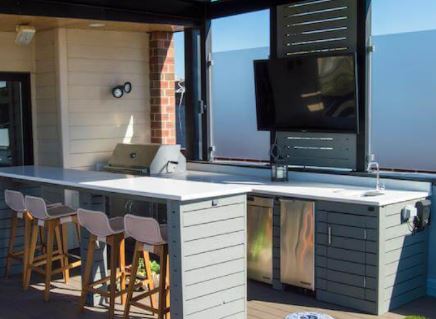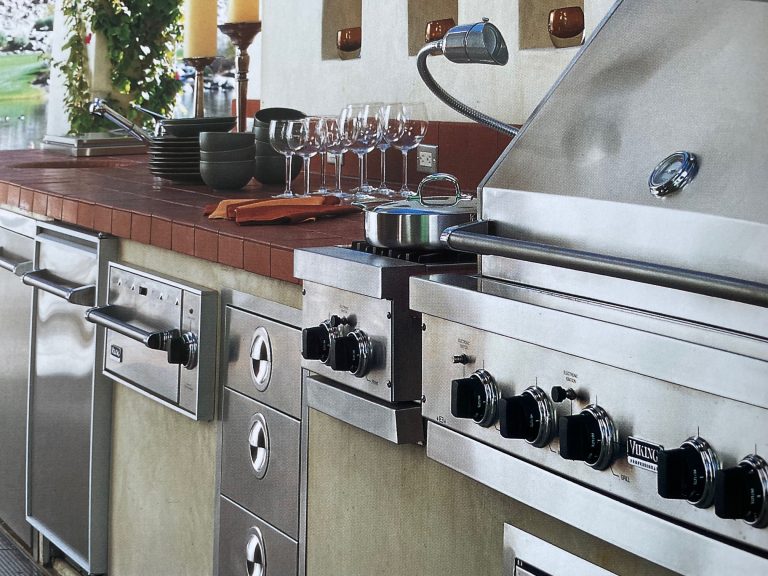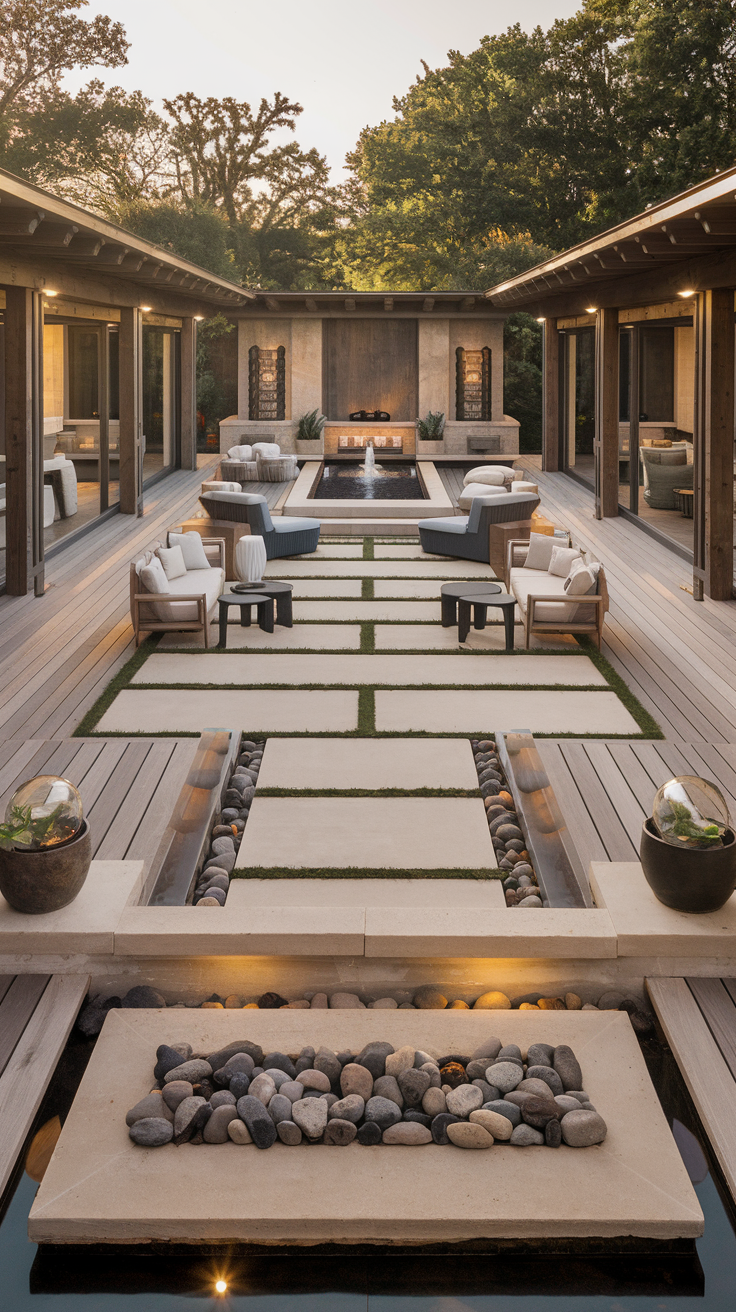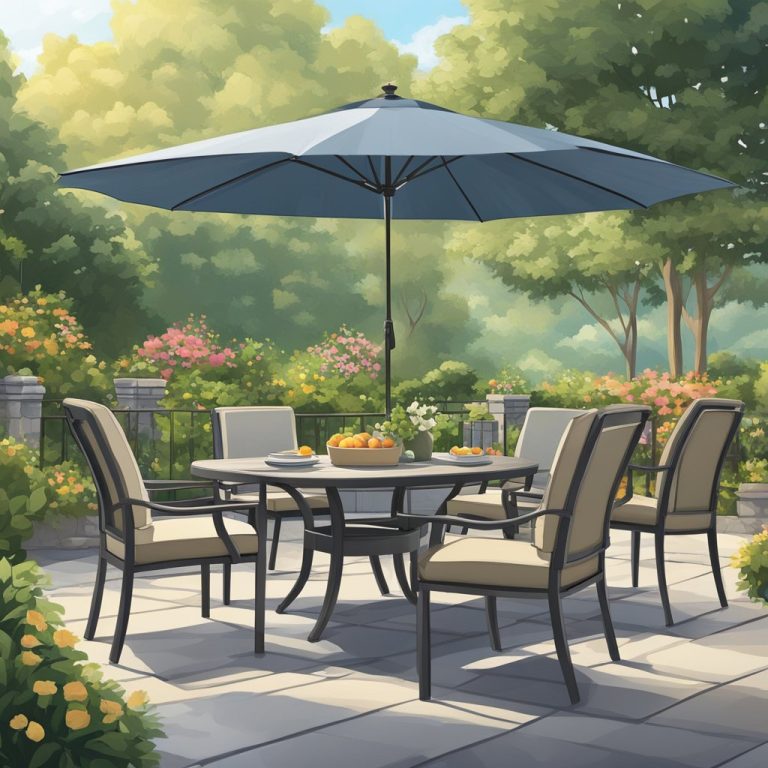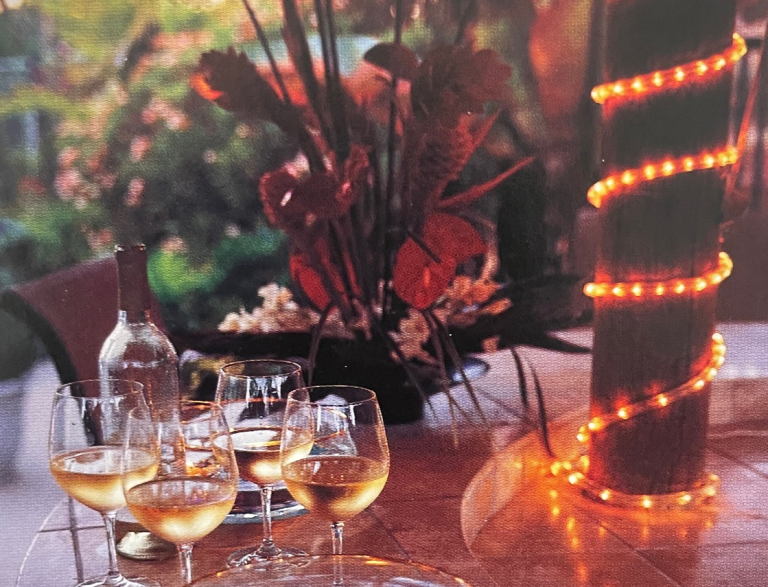16 Things to Think About When Building Cabinets for an Outdoor Kitchen
Outdoor Kitchen and Cabinet Considerations Before You Start Building
When your current home was built, an architect and builder figured out the most efficient and aesthetically pleasing design for your kitchen before construction started. Although times and tastes change, the principles of good design and functionality still hold true for any construction project including outdoor kitchens.
There’s a lot of planning that goes into building an outdoor kitchen that looks and functions the way you want it to for the way you cook outdoors and the way you entertain. It won’t be by accident or luck that you get the outdoor kitchen of your dreams.
Here are 16 things to consider before building cabinets for an outdoor kitchen:
1 Are Outdoor Kitchens Allowed?
You may not be allowed to build an outdoor kitchen or permanent outdoor structures in your town or development. It is best to check to make sure you can build what you want before putting the time and effort into the build. If allowed, make sure you know what the setbacks are and any other restrictions you might have to comply with. If required, get a permit. The permit protects you and puts another eye on the work (in the form of inspections). It also comes in handy if you ever plan to sell your home and the home inspector checks to see if a permit was pulled for construction of the outdoor kitchen.
2 What kind of budget do you need for an outdoor kitchen?
Budget is an important consideration in any building project, and many people list it as their primary decision criteria. It’s critical to set a reasonable budget and keep to it. Otherwise, expenditure has a tendency to spiral out of control. Ensure that each component of the kitchen — cabinets, countertops, seating, lighting, utilities, appliances, and so on – has its own line item.
Budget considerations include:
Higher-quality finishes and materials may be more expensive, but they tend to last longer.
Utilities such as electricity, gas, and running water will very certainly be required in the area. It’s critical to budget for this additional cost because it will require additional trades, materials, and may be subject to local permitting and inspections.
If the new space will require internet or cable, make sure to include additional WiFi and network installation line items.
3 Where do you want to locate your outdoor kitchen?
You must consider the location and arrangement of your outdoor kitchen, just as you would when designing your overall landscaping. Consider which entrance you’ll use to access your outdoor kitchen, how far it is from other elements in your backyard (like your pool, spa, or even an outdoor putting green or sports court), and which direction you’d prefer to cook and entertain guests. How about access to utilities?
When it comes to designing the ideal outdoor cooking and entertaining space, location and layout are critical.
Location is also important in the geographical sense. Take into account the climate and surroundings in which the home is situated. Both will have a substantial impact on the outdoor kitchen’s design, materials, and open-season length. Temperatures change in every climate, and some have severe fluctuations throughout the year. Tile and natural stone counters and building materials should be avoided in areas where this is a concern, as they are prone to cracking. Depending on the materials chosen, weather extremes may also wreak havoc on your outdoor kitchen cabinets. PVC and other non-stainless steel materials, for example, are prone to warping and bending under severe temperatures.
4 How big should the outdoor kitchen be?
It’s crucial to consider the amount of the area you’ll need for entertaining when you’re first constructing your outdoor kitchen. Consider how many guests you’d like to invite and how much space you’d like to provide for them.
The location of your outdoor kitchen on your property determines, in large part, how much space you will have in it.
The size of your kitchen will be determined by the amount of room you have, how you plan to use it (from family time to huge groups), and what you want to add. You could consider more efficient and simple plans for a tiny yard or patio, such as a linear pattern or an island. If you have extra space, an L-shaped or U-shaped arrangement will help you maximize the practicality and enjoyment quotient of your outdoor kitchen.
Plan enough space for food prep, cooking, serving, and cleanup in whichever size kitchen you choose. Consider how many people will be cooking or prepping meals at the same time, and make sure there is adequate room for everyone to move around. It should be large enough to be comfortable, but not so enormous that it becomes inefficient.
You should also think about whether you just want kitchen prep space, or you want to add an outdoor bar and where your guests and family will gather. All of these take up space.The size of the kitchen will influence its shape and how each component interacts with its surrounding. Do you want your outdoor kitchen to occupy only a small amount of your deck, leaving room for a lounge or other type of section? Or do you prefer the notion of a large outdoor kitchen that spans the length of your deck and is designed just for entertaining and cooking for your guests? It’s much easier to include islands, built-in grills, and other utilitarian features into a bigger outdoor kitchen if you have enough space. Working in small places, on the other hand, frequently necessitates greater forethought.
5 What kind of layout is best for an outdoor kitchen?
When it comes to designing an outdoor kitchen, it’s important to have a basic awareness of the many layouts available in order to maximize space, functionality, and integration, among other things. This contributes to the creation of an outdoor living area that extends beyond a BBQ island for entertainment.
The working triangle – or path – that the user takes when moving from the refrigerator to the sink to the cooking area is defined by the arrangement of the countertops, key appliances, and storage rooms in an outdoor kitchen. Here’s a summary of five different outdoor kitchen layouts:
Galley
The outdoor kitchen layout, like its interior counterpart, is frequently a go-to when it comes to space design. It is divided by a walking area, which allows for simple back-and-forth during food preparation. It consists of two rectangular runs of cabinetry that face each other with appliances and are separated by a walking area. The work area is large enough for one cook to operate at a time, and it forms a small work triangle. Because this patio space can appear small, the color of the worktops, plants, and lighting are all important considerations.
U-shape
Because it offers continuous countertops and enough storage on three sides, this is the most versatile concept for an outdoor cooking area of any size. This floor layout is large enough to be divided into various workstations for one or more cooks in larger rooms.
L-shape
A natural work triangle is produced by continuous counter space and workstations on two neighboring walls in this style of outdoor kitchen concept and layout. The advantage of this kitchen layout is that it not only gives the chef with a functional work area, but it also makes it simple for the cook to interact with guests. The following are some of the benefits of a U- or L-shaped kitchen layout:
Access to outside appliances and other kitchen equipment is made easier.
A kitchen island and other appliances such as a built-in grill, pizza oven, or stainless steel sink can all be accommodated.
Adding a sitting bar behind the counter to create more counter space.
Separating the outdoor cooking area from the flow of foot traffic.
Making the outdoor kitchen feel like a full-fledged indoor kitchen to add the WOW factor.
G-shape
The G-shape is a variation of the U-shaped kitchen layout, with the same amount of counter space and storage possibilities on three sides. The peninsula or partial fourth wall of additional cabinets distinguishes the G-shape kitchen floor design.
Straight Run
The single-wall kitchen layout is perfect for outdoor living spaces with limited space. With all three cooking zones along one wall, the work triangle in this configuration is more like a work line than a triangle. Always seek the advice of an outdoor kitchen designer who will work within the confines of the outside living space and its features, such as a pool house, deck, patio, or backyard kitchen structure. Focus on creating a work triangle in the outside space – even if you aren’t making major structural modifications with a full remodel, you may improve the layout with the correct amount of cabinetry.
Remember, too, that any of the above can be configured as outdoor kitchen islands and stand alone on a patio or deck.
6 What are the design and aesthetic consideration when building an outdoor kitchen?
Even though your outdoor kitchen is stunning in and of itself, it must blend in with the surrounding surroundings. As though it were an extension of your home. Make sure your outdoor living space looks natural, as if it was there from the beginning.
With the popularity of outdoor living spaces growing, many homeowners are wanting to replicate their inside kitchen’s color, style, and design. Others desire to build a separate living space that is distinct from the rest of the house. In either case, there are numerous possibilities.
The outdoor living area’s focal point has lately become fully functional stainless-steel cupboards that hold appliances and provide storage. These cabinets have a dual purpose and come with a powder coating that prevents corrosion and discoloration. They give you more options for incorporating style through colors and finishes, while also extending the life of your investment. To complement your stainless steel cabinet, choose from a variety of cabinet pull styles.
Outdoor kitchen counters are also necessary for food preparation and other purposes. Certain materials, such as stone tile, granite, glazed ceramic tile, and concrete, function better in an outdoor setting depending on the climate. These alternatives are strong and long-lasting while still being attractive. It is important to remember, however, that these materials must be maintained and are susceptible to harm from excessive temperatures.
7 Which appliances should you consider putting in your outdoor kitchen?
The list of appliances available for outdoor cooking and entertaining is growing at a fast pace, much like the popularity of entertaining out of doors. Your style of entertaining and the types of foods you like to cook and serve will determine which appliances you want to include in your outdoor kitchen build. Each appliance will need to occupy a spot in your layout and will need additional prep or counter space in order to function efficiently.
Most will choose a combination of these appliances when designing their outdoor cooking space: bbq grills, pizza ovens, refrigerators, griddles, side burners, smokers, kegerators, and even choose hoods to dispel cooking smoke. Ice makers and specific types of grills such as the Green Egg or Kamodo Grill figure largely in designs of late. Make sure you have considered which appliances you will actually use often enough to invest space and financial resources in them. You may not need that outdoor wine fridge if your indoor wine fridge is accessible and ample enough to store your vintages.
8 What kind of functionality do you need in an outdoor kitchen?
Take into account the functioning of your outdoor kitchen. An outdoor kitchen should have four different operating zones, just like a professional kitchen. Each of the four zones (cold, hot, wet, and dry) should be easily accessible. Refrigeration and ice makers have their own dedicated cold section, whereas cooking appliances have their own designated hot area. A sink and/or a bartending station are located in the wet area. Finally, the dry room is used for meal preparation and additional counter space. Remember to account for utilities while deciding where to install zones. Ensure that you have access to gas, electricity, and water.
Ask yourself these questions:
What is your counter space like?
What is the location of that space in terms of appliances or utilities?
What are the locations of the hot, wet, cold, and dry zones?
What is the maximum number of persons you need to accommodate?
When conversing with guests, which way do you want to face?
9 What kind of lighting do you need for an outdoor kitchen?
Exterior lighting can help with food preparation and mosquito control. Installing the correct lighting fixtures in your backyard, whether you have a small and intimate outdoor space or a large outdoor kitchen, can substantially improve your outdoor cooking/dining experience. There are a few places where you can put different lighting fixtures to liven up your outdoor kitchen and dining area including:
Spotlights
Nothing beats a perfectly cooked steak over an open flame, but it’s tough to see if your meal is undercooked or overcooked when you’re cooking after dark. Spotlights placed close to the grill will help you to maintain a close eye on the food, allowing you to spend more time socializing rather than checking if it’s done. If you and your pals are enjoying some cocktails, little spotlights put over the bar area can also provide the ideal lighting for mixing beverages.
Hanging Pendant Lights
Pendant lights come in many different types, patterns, and sizes. Drum pendants are light fixtures with a cylindrical drum-style shade that are ideal for use over a bar or in a serving area. Consider installing glass or wooden pendant lights above the outdoor kitchen island if there is a ceiling or overhang above it for additional task lighting.
Ceiling Fan Lights
Consider putting a ceiling fan with a lighting fixture if your outdoor eating area has one. The fan will keep insects at bay, while the lighting will provide just enough light for serving and eating meals. You may control the amount of light in the area around the table by installing a dimmer.
Landscape Lights
Don’t forget to include some landscape lighting when picking lighting for your outdoor kitchen area. The outdoor kitchen will be highlighted by lighting in the landscaping area surrounding it. Installing upward-facing small spotlights near an outdoor kitchen area, for example, will accentuate the water feature while delivering extra light to the eating and/or cooking space.
Walkway Lights
LED or solar path lights will safely guide your dinner guests to the outside eating area while also providing a pleasant illumination to the space, whether you have steps leading up to the outdoor kitchen area or a brick pathway. Pathway lighting can also be used to add additional lighting to certain portions of the patio, such as the eating area.
10 What kind of seating should you have for an outdoor kitchen?
Without a location to eat your delectable meals and entertain friends and family, no outdoor kitchen is complete. Low seating away from outdoor cooking areas is popular in today’s designs. There are bar seating options, lounge options, round and rectangular dining table options – whatever fits your entertaining style and typical guest list size.
If you typically entertain just a handful of guests, you can choose sit down dining as well as lounge seating for before and after dinner drinks. If you have a pull up bar in your kitchen, you’ll just need bar height or counter height bar stools and everyone will feel like they are part of the action.
Larger get-togethers require more space and more seating. People will need to sit down at some point during the event so you’ll not only want to have the space, but also enough seating for everyone. The types of foods you serve will also impact the number and type of seating you will need. Some meals need a tablesetting to be enjoyable.
11 What kind of storage do you need in an outdoor kitchen?
When it comes to designing your outdoor kitchen, storage isn’t always the first thing you think about. But good storage is essential to a well-functioning kitchen. If you are constantly running inside the house to get the tools and items you need, you will quickly tire of cooking outdoors.
Consider what products will need to be stored in the outdoor kitchen. Most outdoor kitchens are not critter-proof, and they are exposed to dust, pollen, temperature changes, humidity, and precipitation. As a result, non-food items such as cutlery, glasses, and plates should be placed in plastic containers within the cabinets.
It’s also beneficial to have a distinct area for cleaning supplies, as this forces you to clean up sooner rather than later. Do you prefer more outdoor kitchen drawers to hold utensils or more doors to hold supplies? Do you need a place to store the propane tank? Are ice bins and spice racks integral to your style of entertaining? How about undersink storage for cleansers and a trash can?
12 Do you need ventilation for your outdoor kitchen?
While it is normal to check the prevailing winds to see where you grill smoke will end up (not in the house or in the neighbor’s yard), sometimes there isn’t enough wind to dispel cooking smoke and odors. This is especially true in covered lanais or when grills are placed against the wall of the house. There just might not be enough air circulation to keep family and guests from getting smoked out.
Vent hoods are one design element you will have to consider when planning an outdoor kitchen as it will require both power and support.
13 Does an outdoor kitchen need a roof?
While you may not need a full roof on an outdoor kitchen, you will need sun protection for yourself, your guests and your outdoor kitchen equipment and countertops.
The shade provides some relief from the sun’s heat, which can make spending time in the kitchen much more enjoyable. It can extend the life of outdoor appliances as well. Shade can be added in a variety of methods, from something as basic as a pergola or pavilion to something as complicated as partially enclosing the cooking area.
If you are worried about rain, then a permanent covering such as a roof is advisable for both the cooking area and where your guests will be seated.
14 Who should install your outdoor kitchen?
There are a few options when you are thinking about how to get your outdoor kitchen installed.
If you want to make this a DIY project, consider your skill level and the amount of time you have to devote to the project. DIY kitchens will save you money, but not if they are never finished or don’t function properly.
You can do a partial DIY kitchen if you buy an outdoor kitchen island kit, or modular units that just require a minimal amount of assembly skills. Outdoor kitchen kits are becoming more popular and more and more manufacturers are adding to their style and design offerings.
Many landscape companies and indoor kitchen showrooms offer outdoor kitchen design and build services. This option will indeed cost you more. Professional installation will probably save time and can offer you more options in every category than are available to a DIYer.
15 How much time do I want to spend on maintaining an outdoor kitchen?
The amount of outdoor kitchen upkeep required is mostly determined by the materials you choose. Some surfaces, such as stainless steel, require maintenance after every use. Other materials, such as wood or HDPE cabinets, are minimal in terms of maintenance.
Depending on your location’s climate, you may need to winterize your outdoor kitchen by covering countertops to protect them from ice and snow. When grills aren’t in use, it’s also a good idea to cover them.
16 How and who do you entertain?
This is an all encompassing decision criteria when it comes to outdoor kitchen building considerations. Are you formal or casual? Are you entertaining business clients or your kids’ friends? Do you have pool parties and burgers? Do you like to show off your mixologist skills with custom cocktails or is smoking meats your specialty?
Your outdoor kitchen will be uniquely your own. We’ve never seen two alike. It is not possible to wake up one day and decide you want an outdoor kitchen and have it ready by the weekend. You’ll be glad you put the time into thinking about what you need and want in your space and make sure that it fits you well.
Related Articles About Outdoor Kitchen Cabinets

